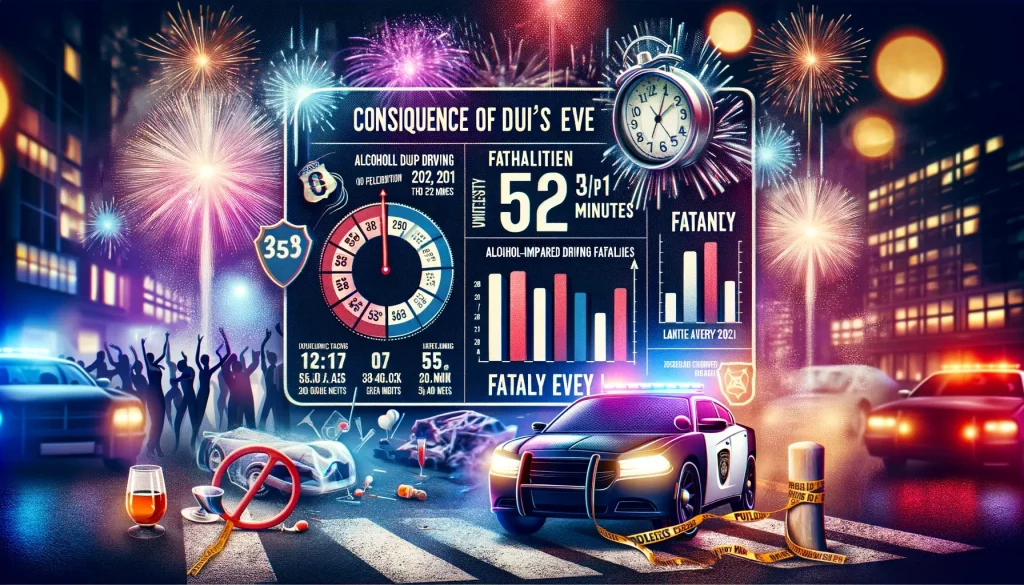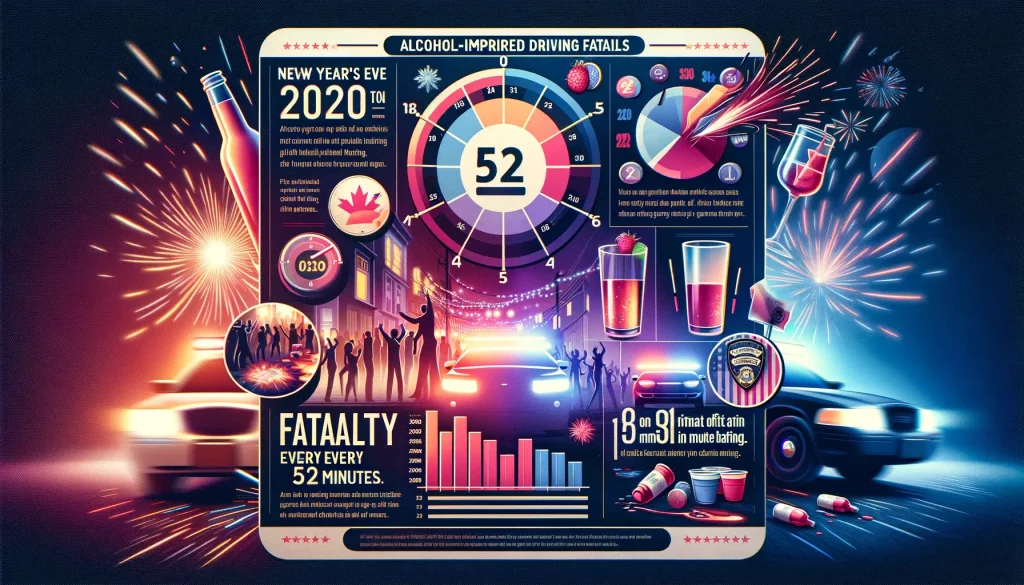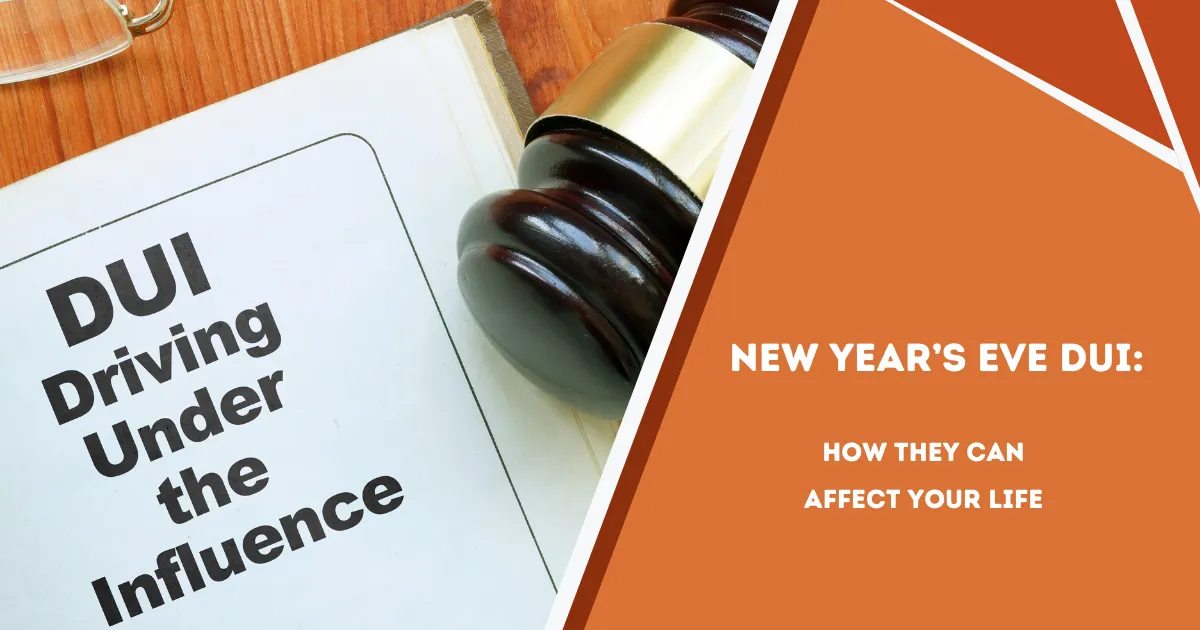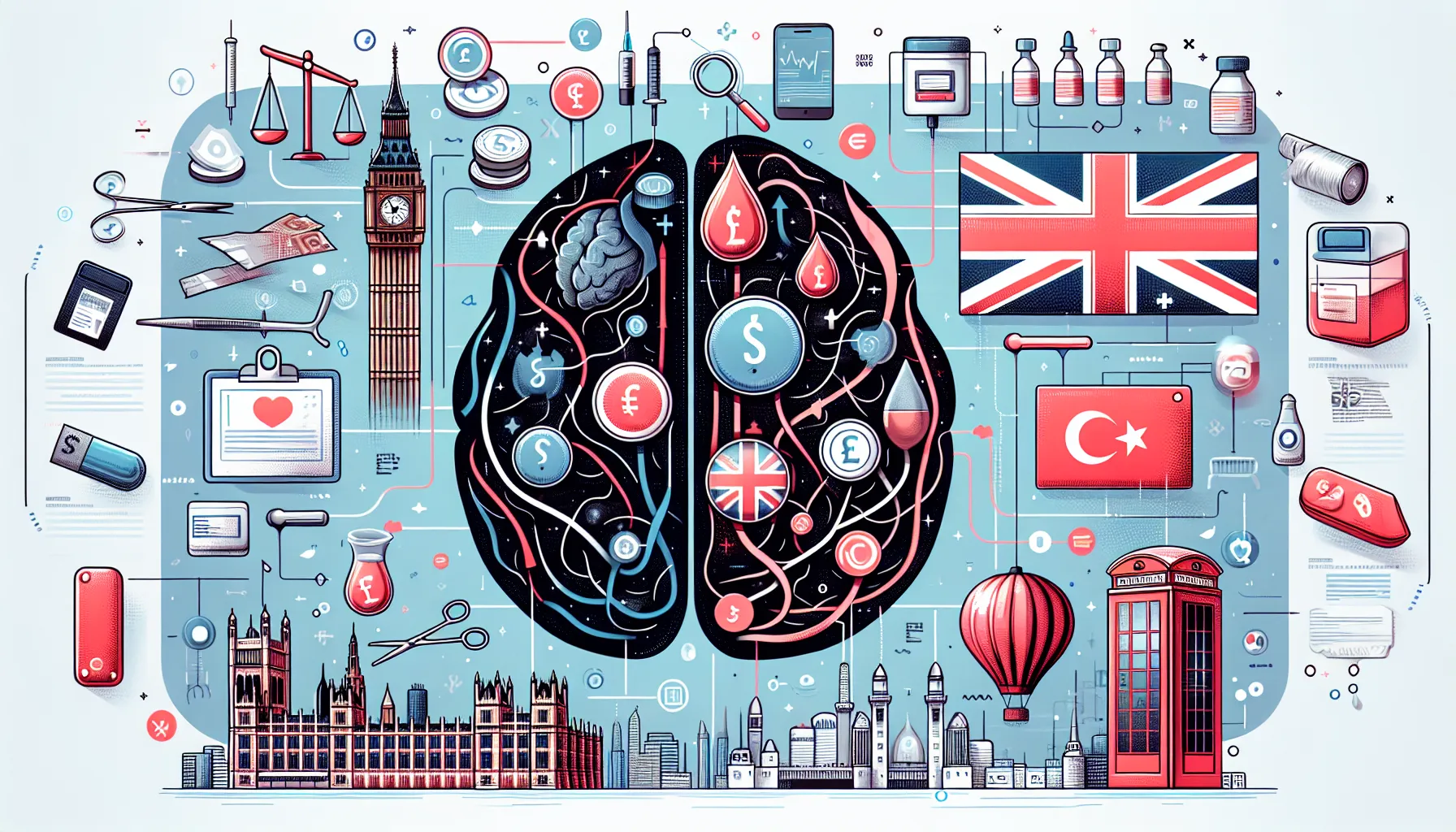Table of Contents
The festive spirit of New Year’s Eve is often celebrated with joy and excitement. But there’s a darker side to this celebration that cannot be ignored.
In 2021 alone, 13,384 people tragically lost their lives in alcohol-impaired driving incidents in the U.S., marking a disturbing 14% increase from 2020. Let’s delve deeper into the grim reality of DUI during this celebratory time.
The Stark Reality of DUI on New Year’s Eve
New Year’s Eve is one of the deadliest times on our roads due to drunk driving incidents. An average of 300 people died in drunk driving crashes during the end-of-year festivities between 2016 and 2020. This alarming data highlights the need to address this pressing issue.
- Over one-third (38%) of all U.S. traffic fatalities during the New Year’s holiday period in 2021 involved drunk drivers with Blood Alcohol Concentrations (BAC) of .08 g/dL or higher.
- On New Year’s Eve in 2021, there was one alcohol-impaired driving fatality every 52 minutes.
- These fatalities from drunk driving represent a 14% increase compared to the statistics from 2020.
There is still much work to be done to reduce drunk driving and save lives during the holiday season. When dealing with legal issues related to DUIs, consulting with specialized lawyers can minimize the struggles that come with navigating the archaic legal system.
That’s why, even though it may not be your first choice, taking a financial hit by a drunk driver lawyer can save you time, energy, and even emotional distress. But to curb this rising issue, we must first understand what causes drunk driving behavior.
Understanding Blood Alcohol Concentration (BAC) and Its Effects
At a BAC of just .08 grams of alcohol per deciliter of blood, crash risk increases exponentially. Even small amounts of alcohol can greatly impair critical driving functions like reaction times, coordination, concentration, and judgment.
- At a BAC of 0.08% – the legal limit for drunk driving in most U.S. states – drivers are 11 times more likely to be involved in a fatal crash compared to sober drivers.
- At a BAC of 0.15%, crash risk increases to an alarming 25 times higher than that of sober drivers.
- Impairment becomes significant from BAC levels as low as 0.02%, with crash risk doubled compared to drivers with 0% BAC.
These statistics highlight how alcohol-impaired driving ability poses an extreme danger on the roads. But BAC levels don’t just increase crash risk. High BAC drunk driving also carries heavy financial and legal penalties.

Immediate Consequences of a New Year’s Eve DUI
The immediate consequences of driving over the legal BAC limit on New Year’s Eve can cause lasting damage.
A first-time DUI offense can cost the driver upwards of $10,000 in fines, penalties, and increased insurance rates [8]. Repeat offenses lead to exponentially higher expenses and severe penalties like license revocation, jail time, and vehicle seizures.
Additional immediate consequences include:
- Up to 1 year in jail depending on state laws
- 5-10 years of having a criminal record
- Significant increase in car insurance premiums – an average of 80% [$10,000 more over 5 years] according to insurance rate estimates.
These numbers illustrate the stark financial realities and legal penalties of a DUI. And those are just the immediate repercussions.
Long-Term Impacts on Personal and Professional Life
The effects of a DUI conviction extend far beyond short-term consequences. Studies by the Bureau of Justice Statistics show over one-third of DUI offenders report job loss and over half face reduced employment opportunities after conviction.
Additionally:
- Nearly 60% of offenders experience social stigma from friends and the community.
- Over 75% of convicted drunk drivers are divorced by their spouse within 5 years.
- After a DUI conviction, drivers typically face insurance rate hikes for an average of 5 years following license reinstatement.
- DUI offenders are often required to have an ignition interlock device installed in their vehicle for 6 months or longer after conviction.
The professional stigma, social isolation, and financial burdens can last for years, demonstrating the true gravity of a DUI offense.
DUI and Its Broader Social Implications
Beyond individual offenders, New Year’s Eve drunk driving carries societal burdens. The CDC estimates the annual economic cost of alcohol-impaired driving at a staggering $123.3 billion.
Key contributors to this figure include:
- Over $25 billion per year in vehicle damage costs
- Almost $40 billion per year due to lost workplace productivity
- Nearly $10 billion per year in medical expenses
Additionally, widespread drunk driving impedes public health initiatives and enforcement measures to reduce overall crash fatalities.
With individual and societal effects this devastating, preventing drunk driving becomes imperative. Because one mistake can derail lives, health, and communities.
Practical Measures To Prevent Drunk Driving Crashes
Campaigns like “Drive Sober or Get Pulled Over” highlight planning ahead for safe rides and designating sober drivers as key drunk driving prevention strategies.
Additional practical tips include:
- Monitoring alcohol intake and understanding your limits
- Calculating your estimated BAC level before driving
- Having cab/rideshare phone numbers handy or using ride-booking apps
- Avoiding routes with high drunk driving rates
- Supporting proactive health campaigns against drunk driving crashes
Following these commonsense guidelines can save lives. Because no celebration is worth the irreversible consequences of drunk driving.

Legal Innovations and Enforcement To Curb Drunk Driving
Alongside public advocacy, legal deterrents also help curb drunk driving rates. These include:
- Increased police patrolling and DUI checkpoints on high-risk days like New Year’s Eve.
- Mandatory ignition interlock device installation for first-time and repeat DUI offenders.
- Vehicle impounds or license plate seizures for drivers caught bypassing interlock devices.
- Development of accurate roadside BAC testing devices to assist law enforcement.
- Pairing awareness and responsible habits with legal enforcement maximizes drunk driving prevention on high-risk occasions. Ultimately, we all must play a role in keeping our communities safe.
Rehabilitation Resources Post DUI Conviction
For those convicted of DUI offenses, rehabilitation pathways focus on accountability, public safety, and decreasing repeat offenses (recidivism). Counseling programs help offenders address high-risk behaviors and make amends to regain societal trust.
Additionally, many states offer diversion programs on first offenses to motivate positive behavior change through rehabilitation rather than incarceration.
After completing the terms of their rehabilitation, convicted drunk drivers can begin the process of rebuilding their driving privileges as well as their personal and professional lives.
Resources include counselor referrals, support groups, career guidance, and financial assistance. With commitment and community support, rehabilitation and reintegration provide a constructive path forward.
In summary, preventing the irreparable harms of drunk driving requires persistent, collective effort through awareness, responsible actions, impactful policies, and rehabilitative support. Let’s make safety on New Year’s Eve and year-round a collaborative priority.
Frequently Asked Questions
What is the legal BAC limit in most states, and how is it measured?
The legal BAC limit for drunk driving in all U.S. states is 0.08%. This means 0.08 grams of alcohol per 100 grams of blood. BAC is measured via breathalyzer tests and blood tests.
Can one DUI offense significantly impact my career and relationships?
Yes, a single DUI can initiate severe personal and professional consequences through legal penalties, social stigma, and financial burdens. Over a third of offenders experience job loss and over half report reduced career opportunities in the long term. Additionally, nearly 60% face damaged relationships with friends/family and over 75% undergo an eventual divorce from their spouse within 5 years.
What’s the most effective way individuals can prevent drunk driving on holidays like New Year’s Eve?
The most effective drunk driving prevention strategy is planning for safe, sober transportation through steps like designating a non-drinking driver, setting spending limits on alcohol intake, keeping rideshare contact information handy, avoiding driving routes with high drunk driving rates, and supporting public health efforts against drunk driving behavior. Committing to responsible decisions remains key to saving lives.




